Neurological disorders are a range of conditions that can significantly impact a person’s quality of life, affecting their ability to perform daily tasks and participate in social activities. The central and peripheral nervous system, which includes the brain, spinal cord, and nerves, are primarily impacted by these disorders.
According to the United Nations, approximately one in six people worldwide suffer from a neurological disorder. Among the most common are Alzheimer’s, Parkinson’s, strokes, multiple sclerosis, and migraines, which affect millions of people globally.
These disorders can have various causes, including genetics, infections, trauma, and lifestyle factors such as diet and exercise. Many neurological disorders are chronic and progressive, meaning they can worsen over time and lead to significant disabilities or even death.
Alzheimer’s disease, for example, is a progressive neurological disorder that primarily affects memory and cognitive abilities. Parkinson’s disease affects movement and can cause tremors, stiffness, and balance problems, while multiple sclerosis causes damage to the nerves, leading to a range of physical and cognitive symptoms.
Living with a neurological disorder can be challenging, not only for the patient but also for their family and caregivers. Treatment options for these conditions vary depending on the type and severity of the disorder but can include medications, therapy, and surgery.

Red Light Therapy Benefits
Red Light Therapy, also known as Photobiomodulation, involves the use of non-ionized light sources that come into contact with the skin, penetrating the tissues of the body and influencing cell behavior. This therapy has a host of benefits, particularly at the neurological and cerebral levels.
Healthcare professionals are continually exploring novel treatments to enhance the health and well-being of their patients, introducing innovative and clinically-proven strategies. One such strategy that has shown promising results in the neurological field is Red Light Therapy, which could significantly improve the symptoms associated with various neurological disorders.
Research has shown that Red Light Therapy can improve neurological function by stimulating the growth of new nerve cells, enhancing brain plasticity, reducing inflammation, and increasing blood flow to the brain. Additionally, it has been found to be effective in treating mood disorders, such as depression and anxiety, and reducing chronic pain associated with conditions like fibromyalgia.
The potential benefits of Red Light Therapy in the neurological field are significant, and ongoing research continues to explore its effectiveness in treating a range of neurological disorders. As a non-invasive and safe therapy, it offers a promising alternative to traditional treatments and could improve the quality of life for many individuals living with these conditions.
Red Light Therapy And Its Effect On The Brain
Research on Red Light Therapy has revealed that it has the potential to positively impact basic brain function. This therapy works by stimulating complex IV or Cytochrome C Oxidase from the respiratory chain, which leads to an increase in the synthesis of ATP – the energy molecule that fuels the body’s various functions. [1] As a result, Red Light Therapy has been found to enhance neuron functioning, promote genetic factors’ stimulation, and possess anti-inflammatory, anti-apoptotic, and antioxidant properties.
The benefits of Red Light Therapy extend beyond basic brain function, as it has been shown to be a helpful supplementary therapy for healthcare professionals in treating a wide range of medical conditions. Its positive effects on the immune system wound healing, and tissue repair make it a useful tool in rehabilitation and recovery from injuries.
Overall, the growing body of evidence on the beneficial effects of Red Light Therapy highlights its potential to support various medical treatments prescribed by healthcare professionals. Its multifaceted properties make it an attractive option for those seeking alternative or supplementary therapies to enhance their overall health and wellbeing.
Red Light Therapy has demonstrated its effectiveness in enhancing cognitive performance and presents potential benefits in treating various neurological disorders such as Alzheimer’s and Parkinson’s. By penetrating the skin, the therapy increases blood flow to the brain, resulting in improved oxygenation and nourishment of brain cells. Consequently, cognitive performance, memory, and overall brain function are enhanced.
The anti-inflammatory and antioxidant properties of Red Light Therapy can significantly reduce oxidative stress, inflammation, and cell death in the brain. This helps in improving neuronal function and protecting the brain from damage caused by factors such as aging and environmental toxins. Thus, the therapy presents itself as a viable and non-invasive alternative for treating several neurological conditions and improving cognitive performance. With growing research and advancements in technology, Red Light Therapy is expected to provide more significant benefits in the field of neuroscience and neurological treatments.
Most Common Symptoms Of Neurological Disorders
Symptoms associated with neurological disorders can manifest in various ways, as the nervous system controls a wide range of bodily functions. It is crucial to note that some of these disorders, such as Alzheimer’s and Parkinson’s, unfortunately, do not have a cure and are characterized by degenerative conditions that worsen over time.
The symptoms of neurological disorders depend on the specific condition and its effects on the nervous system. These can include motor symptoms such as tremors, muscle stiffness, and difficulty with coordination. Sensory symptoms such as pain, numbness, and tingling can also occur, as well as cognitive symptoms such as memory loss, confusion, and difficulty with speech.
While treatments are available to manage symptoms and slow disease progression, many neurological disorders remain incurable. Conditions such as Alzheimer’s and Parkinson’s are chronic and progressive, meaning they worsen over time. However, ongoing research continues to seek new treatments and potential cures for these debilitating conditions.

Neurological disorders can affect various parts of the nervous system, including the brain, spinal cord, and nerves. Some of the most common symptoms related to neurological disorders include:
- Headaches
- Dizziness or vertigo
- Numbness or tingling in the limbs
- Muscle weakness or tremors
- Difficulty with coordination or balance
- Seizures or convulsions
- Loss of consciousness
- Changes in vision or hearing
- Memory loss or confusion
- Speech difficulties or trouble communicating
- Mood swings or changes in personality
- Chronic pain or discomfort
- Sleep disturbances or insomnia
- Fatigue or weakness
- Problems with movement or gait
- Changes in sensation, such as sensitivity to touch or temperature
- Difficulty swallowing or speaking
- Involuntary movements or spasms
- Loss of bladder or bowel control
- Cognitive impairment or intellectual disability
It’s important to note that many of these symptoms can also be caused by other conditions, so it’s relevant to consult with a medical professional to get an accurate diagnosis.
Of course, the development of these symptoms will depend on the type of disorder being treated, the general health status of the patient, and the level of progression they are at. These types of manifestations make more complicated the performance of daily tasks.
Red Light Therapy Could Improve Symptoms
Scientific studies have shown that Red Light Therapy can effectively contribute to the proper functioning of the brain. This non-invasive treatment works in a natural and safe way, and while it cannot eliminate neurological conditions, it can significantly improve the body’s response capacity, thereby alleviating related symptoms. A Red Light Bed, for example, could be a useful tool in this process.
Red Light Therapy can restore cellular processes and function as a neuronal inhibitor, which could help slow down the progressive neurological deterioration often seen in such conditions. This approach has the potential to be highly beneficial by delaying memory decline, enhancing cognitive ability, and improving overall sleep quality. [2]
It’s important to note that while Red Light Therapy has been found to be effective in promoting brain health, it should not be considered a stand-alone treatment for neurological disorders. A comprehensive treatment plan that includes Red Light Therapy, as well as other medical interventions and lifestyle modifications, may be necessary for managing these conditions. Nevertheless, Red Light Therapy is a promising and natural method that has the potential to support the brain’s function and help individuals experiencing neurological disorders to achieve better outcomes. [3]

It is crucial to note that the diagnosis and treatment of neurological disorders should be carried out by a qualified health professional in the field. Red Light Therapy Bed sessions could serve as a supportive treatment for certain indications, but it is important to follow the guidance of a medical professional.
Red Light Therapy is a natural and effective option for promoting wellness, vitality, and overall health. If you are interested in learning more about this therapy and its benefits, our website provides a wealth of educational resources. By taking advantage of our Red Light Beds, you can potentially transform your lifestyle and experience the many advantages of this treatment. However, it’s important to note that Red Light Therapy should not be considered a substitute for medical treatment or advice from a qualified healthcare professional.
[1] Salehpour F, Mahmoudi J, Kamari F, Sadigh-Eteghad S, Rasta SH, Hamblin MR. Brain Photobiomodulation Therapy: a Narrative Review. Mol Neurobiol. 2018 Aug;55(8):6601-6636. doi: 10.1007/s12035-017-0852-4. Epub 2018 Jan 11. PMID: 29327206; PMCID: PMC6041198.
[2] Gutiérrez-Menéndez A, Cid-Duarte S, Banqueri M, Martínez JA, Méndez M, Arias JL. Photobiomodulation effects on active brain networks during a spatial memory task. Physiol Behav. 2021 Mar 1;230:113291. doi: 10.1016/j.physbeh.2020.113291. Epub 2020 Dec 16. PMID: 33338484.
[3] Rochkind S. Photobiomodulation in Neuroscience: A Summary of Personal Experience. Photomed Laser Surg. 2017 Nov;35(11):604-615. doi: 10.1089/pho.2017.4381. PMID: 29099679.

